Sunday, February 11:
Today was a study day spent in Melbourne.
Monday, February 12:
Today we left Melbourne and traveled along the great ocean road. We stopped at Loch Ard Gorge and the Twelve Apostles. These locations were absolutely gorgeous and provided first hand insight on how Australasian is managing conservation of environmental and historical sites with tourism. Visitors are highly encouraged to stay on the designated paths as not to corrode the natural rock formations such as the cliffs or stalagmites and stalactites as well as not to trample vegetation that has begun to spring up in the bottom of the gorge.
We ended the day at Bimbi Park, where we stayed for the next few days.
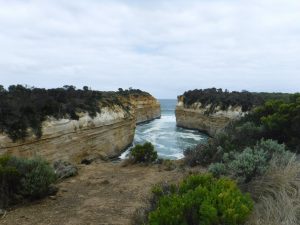
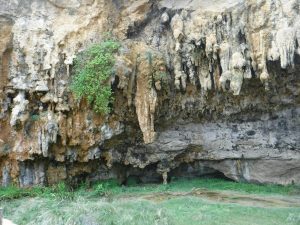
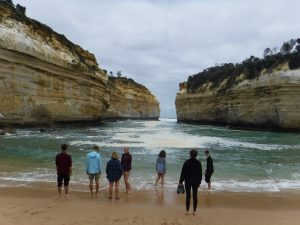
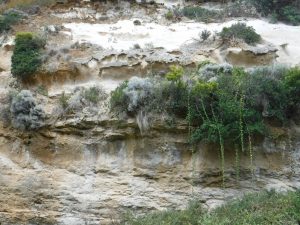
Tuesday, March 13:
Today we explored some regeneration burns at the Conservation Ecology Center. We learned a lot about the historic role of controlled burns in Australia’s history. Aborigines learned many years ago, that spreading fire encouraged new foliage to grow from the ashes and larger, more dangerous fires were prevented in the process. After settlement by Europeans, these controlled burns were stopped, but there has been a recent push by conservationists to bring back the process, and positive changes have already been seen since doing so. Invasive species are being controlled and destroyed, while native eucalyptus forests are making a comeback. (Many native species including eucalyptus trees rely on fire to germinate.)
While we were at the Ecology Center, we also learned that in some places in Australia, dogs are being trained to help locate endangered species. One of the handlers demonstrated the process with two of their dogs, who have been trained to locate tiger quoll (the spotted creature below) scat. The dogs do a quick scan of the area and then use their noses to narrow the search area. They have been specially trained to give non-verbal cues when they get close, as to not disturb wildlife in national parks and other protected areas.
On the walk back to Bimbi Park, we spotted several wild koalas in the eucalyptus trees. We saw around 6 individuals including a mother and her joey.
In the afternoon we took a treetop walk through a recovering eucalyptus forest. It was interesting to learn about a fungus that was plaguing many individuals of a single species of tree. The spores spread more quickly because of human visitors and once there are visible signs on the trees it is too late to save them. During our walk, we also learned that there are several species of tree which send out “runners” or secondary trunks when the main tree becomes old, so that when the main body dies, the organism continues to live.
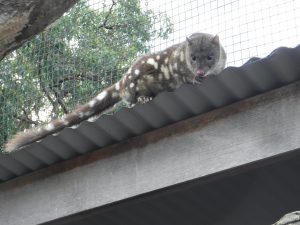
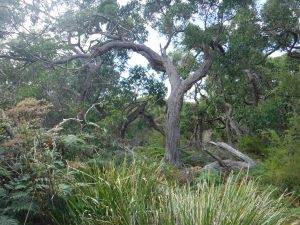
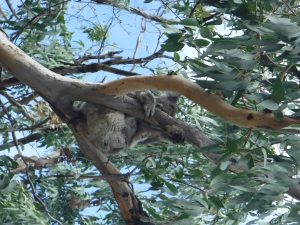
Wednesday, March 14:
Today, our guide Richard Callopy, led us on an interpretive walk at Pt. Lookout. We started with a walk to and alongside the shoreline and then spent over an hour exploring tide pools. Our guide also showed us some interesting rock formations. A lot of the stone along Australia’s coast is mudstone which has hardened over thousands of years. As the ocean waves crash against the rock formations, certain sections erode away faster than others, leaving round sections of harder sediment.
The specific area of the coast we went to was connected to natural freshwater springs. Some of it comes from river systems and drips down the rock formations , but more freshwater could also be reached by digging into the sand along the shoreline. Richard demonstrated this by digging down about a foot and then encouraged us to taste the water, and it was, surprisingly, fresh and not salty.
In the afternoon, we walked to Station Beach and Rainbow Falls. The falls are another amazing place where freshwater meets saltwater. While there we also learned a lot about rips and the importance of knowing your beaches before going for a swim. Rips might not look like all that much at first, but the currents are much stronger than they first appear.
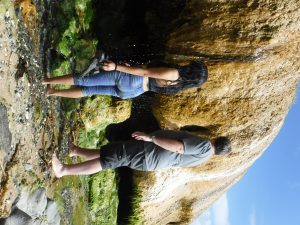
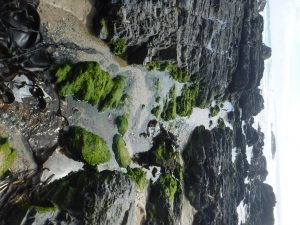
Thursday, March 15:
We left Bimbi Park and continued on our journey to Phillip island. Prior to Phillip Island, we made a stop at the Werribee Western Treatment Plant. During this visit we learned about how majority of sewage from Melbourne is processed, and its environmental impacts. This treatment was unique in the fact that it used bacteria that is commonly found in our guts to break down the sewage. Lastly, we were about to spot some of the 241 species of birds who often fed on the sewage. After a long day on the bus we finally reached our accommodation which was the YHA Phillip Island.
Friday, March 16:
The next day we had three lectures in the morning which gave us an introduction to Phillip Island Nature Park. We learned about the different areas that comprise the park which include the Koala Conservation Center, Penguin Parade, and Churchill Island. After lectures, we went in a cruise to seal rocks where we saw a bunch of adult and baby seals! Later that night we went on a sunset walk and shearwater watch at Cape Woolamai. We walked along the beach and then to a point lookout where we could see the shearwaters coming in from sea to spend the night in their burrows on land. We learned about the importance the shearwaters, especially amongst the indigenous peoples of Australia. Some of the uses included medicinal purposes and body art during traditional ceremonies.
Saturday, March 17:
We started the day Nobbies Center where we learned about the little blue penguins that resided on Phillip Island. We then spent the remainder of the day at the Penguin Parade. The first thing we did was create artificial penguin burrows! The current penguin parade center is going to be relocated which means there will be more room for the penguins to inhabit the land. However before this occurs certain plants must be grown so that the soil does not collapse on the penguin burrows. Next, we had a lecture on tourism and the environment. It was interesting to learn about the precautions the penguin parade staff was taking in order to conserve the blue penguins. We then enjoyed delicious fish and chips before we went to the penguin parade show!